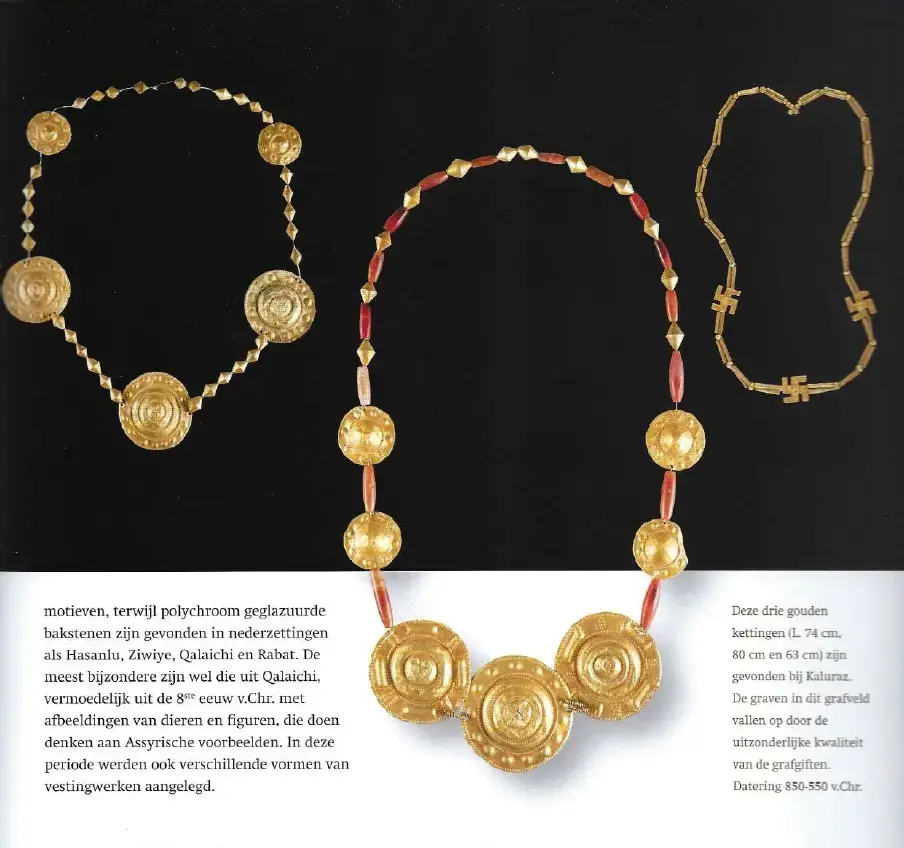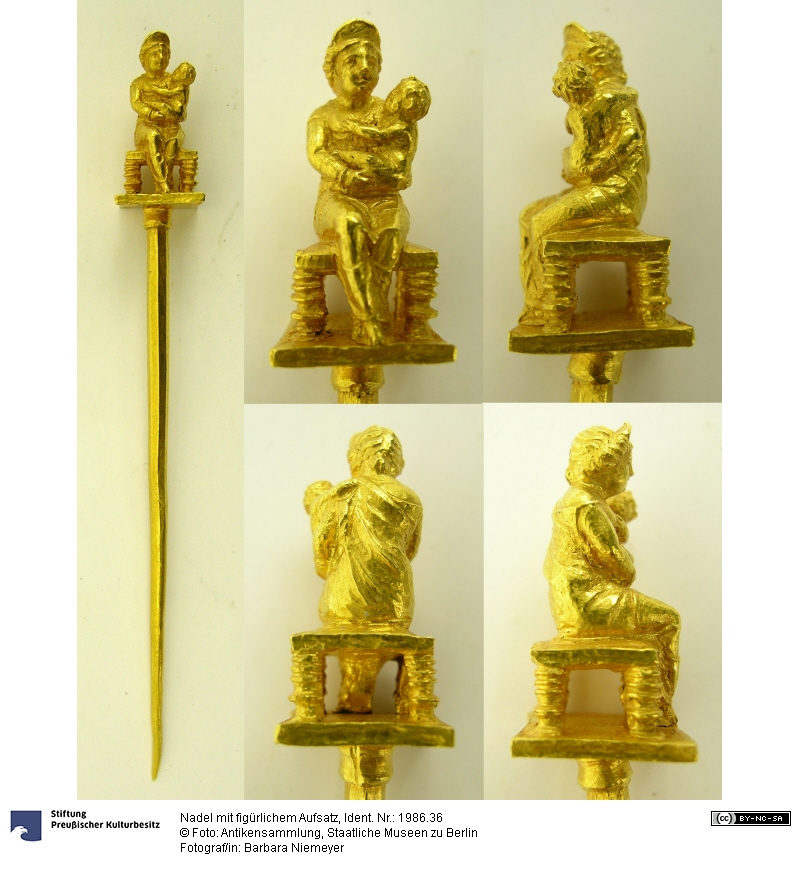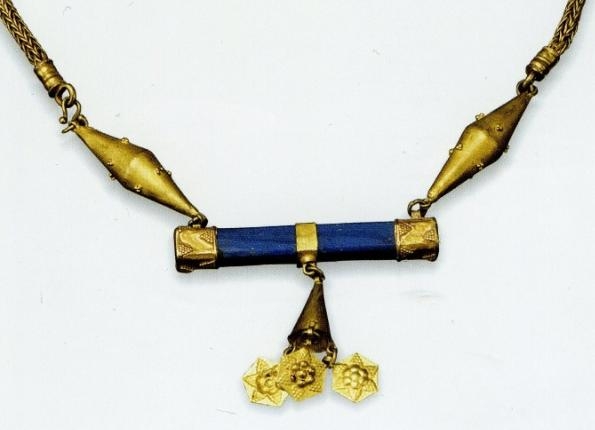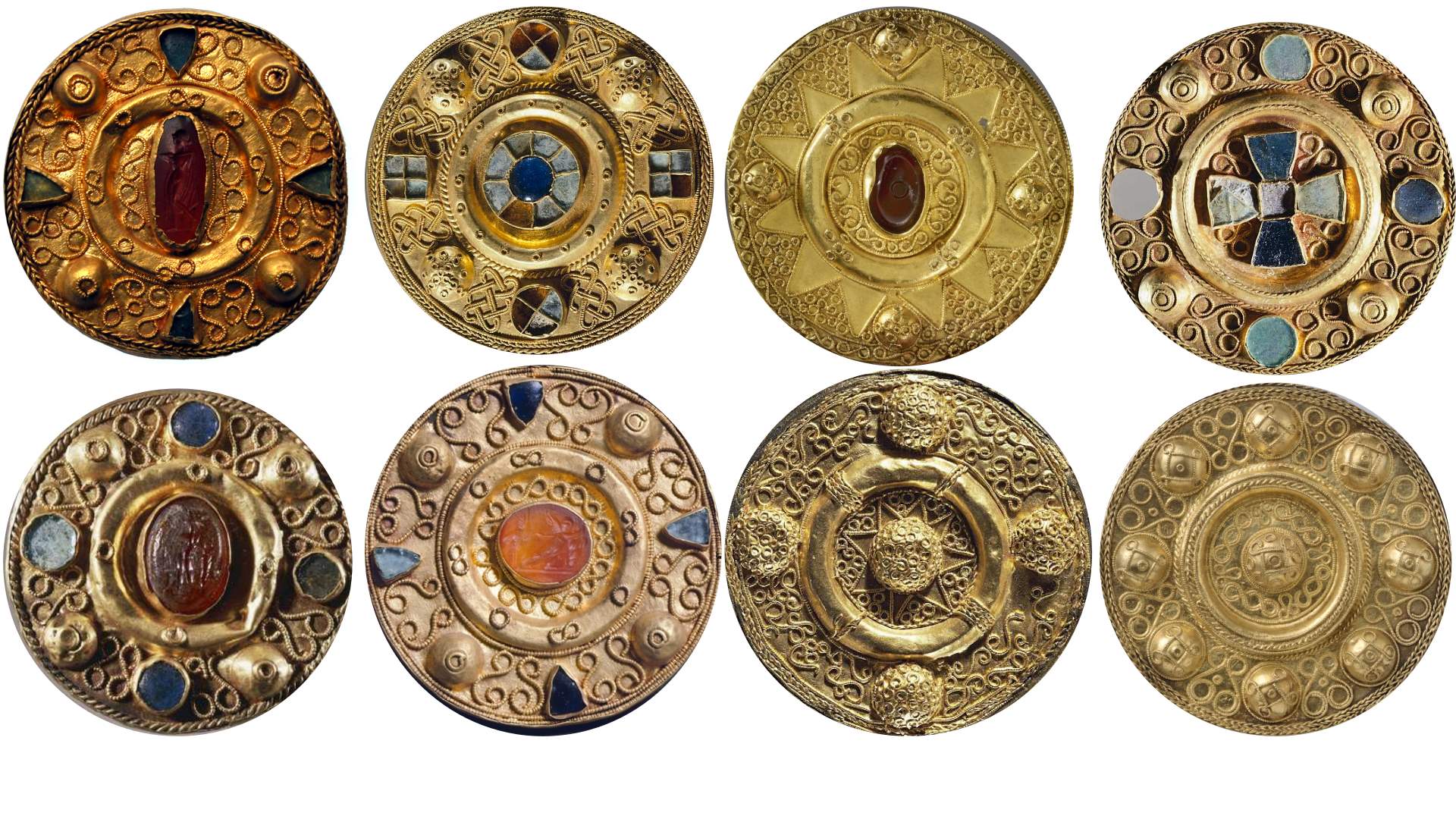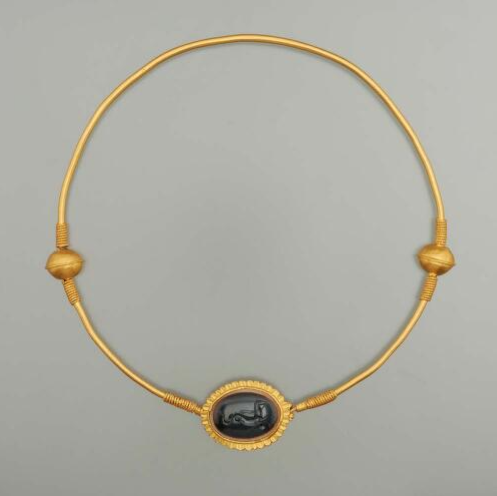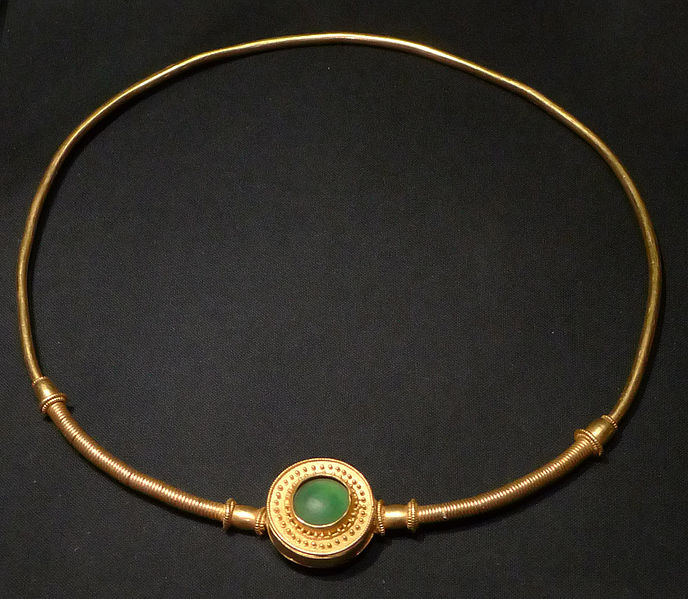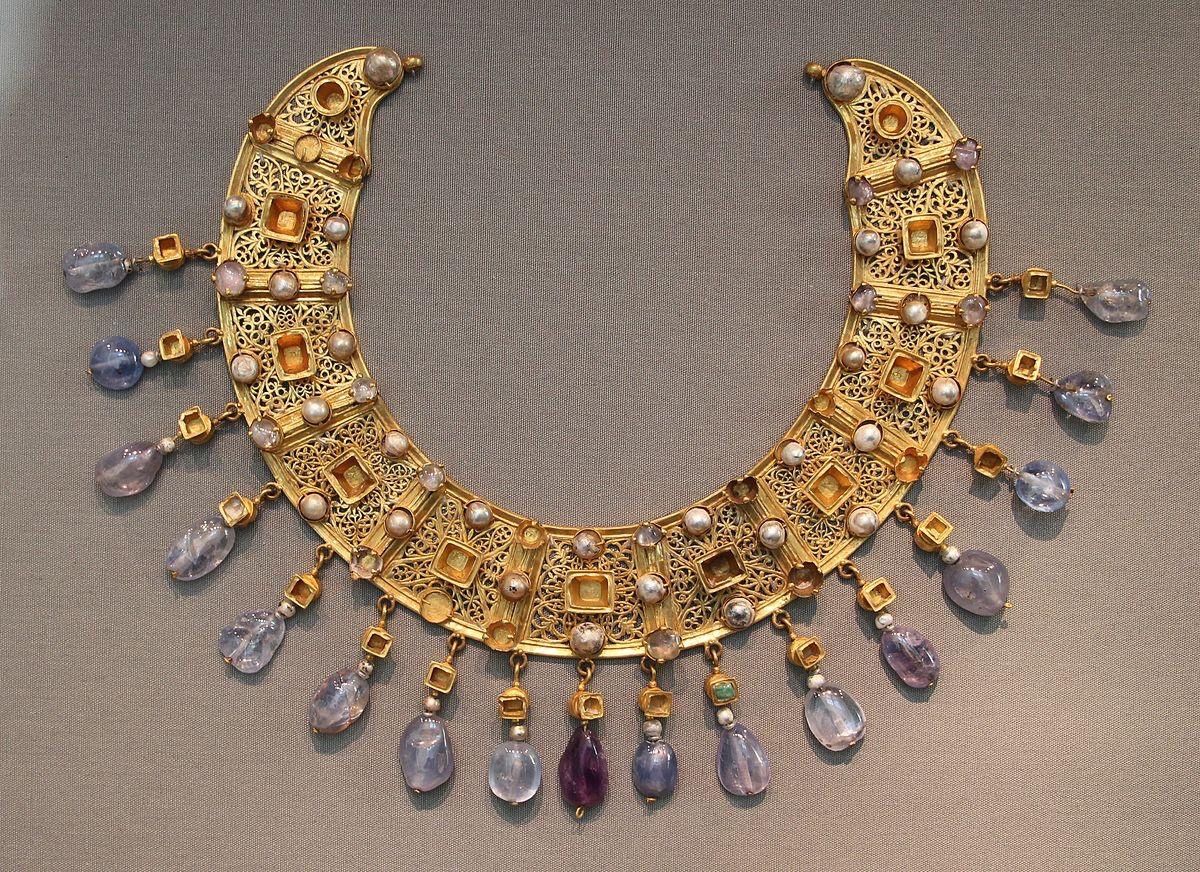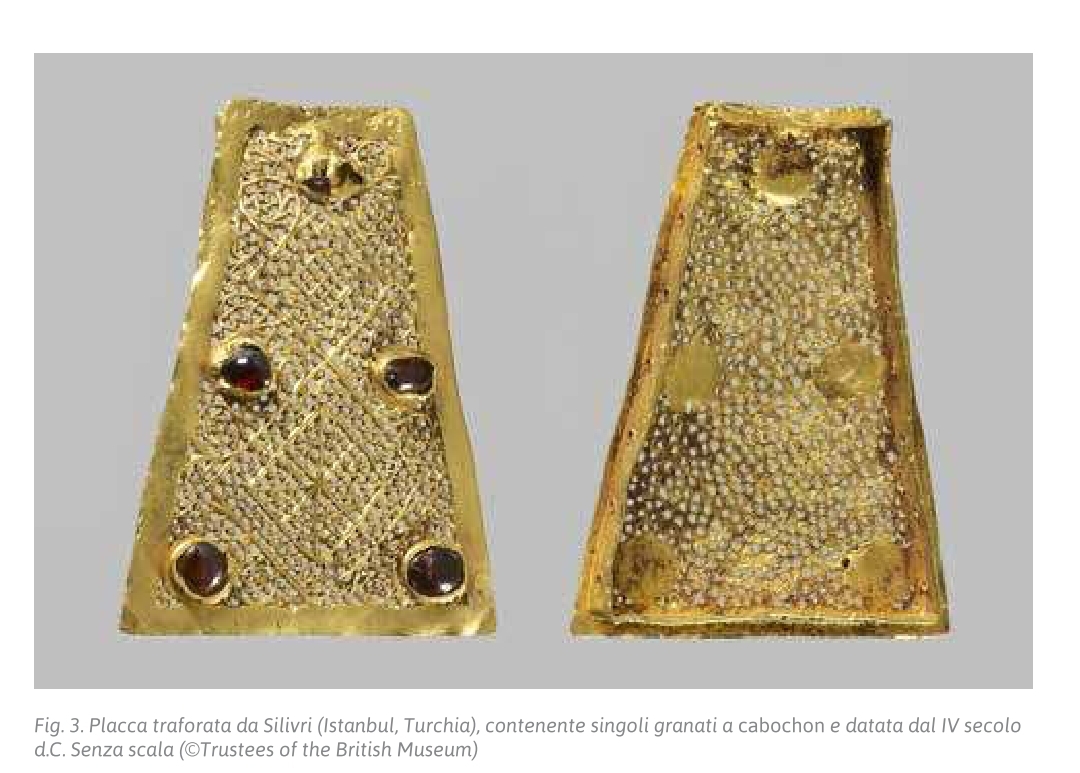

Made of gold, inlaid with lapis lazuli, turquoise, onyx, crystal quartz.
Mid-6th – 4th century BCE, Persia, Iran.
MIHO museum https://www.miho.jp
https://www.miho.jp/booth/html/artcon/00000465e.htm

Iran, Persia, Achaemenid period
Mid-6th to 4th centuries BCE
Gold with lapis lazuli and agate, and Duck’s beak made of carnelian
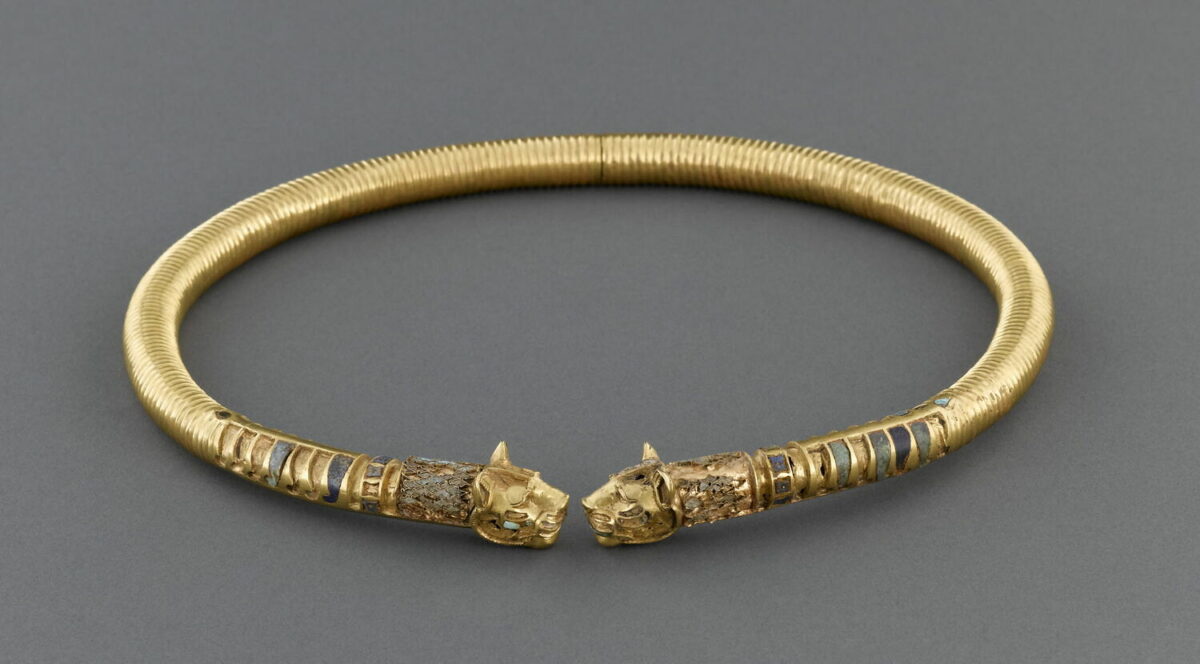
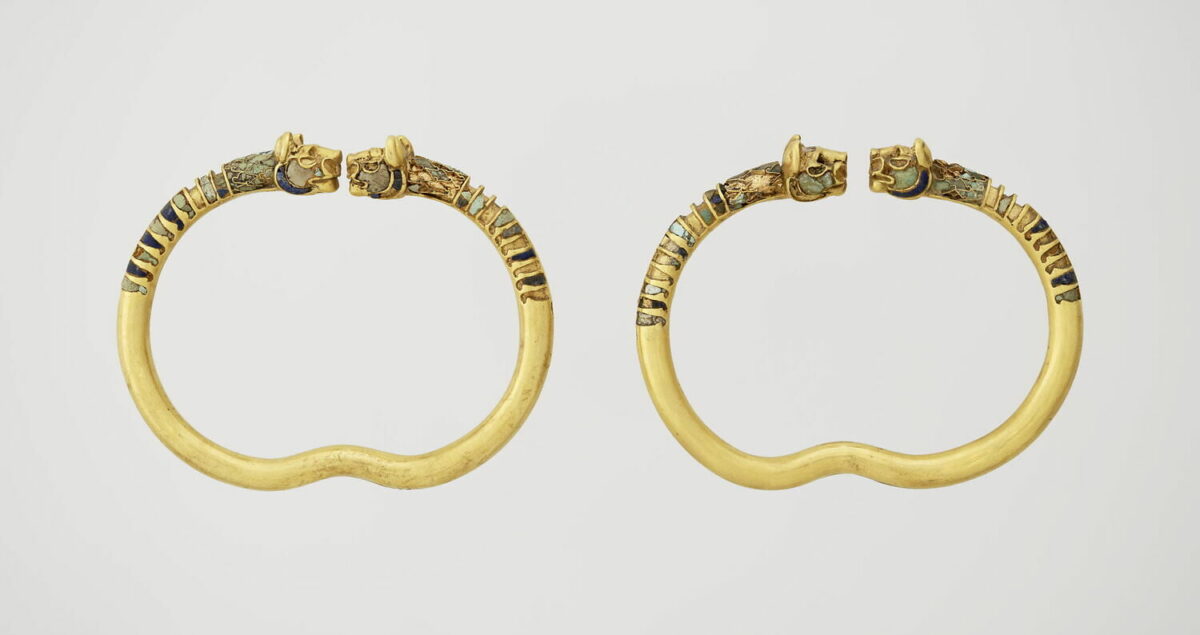
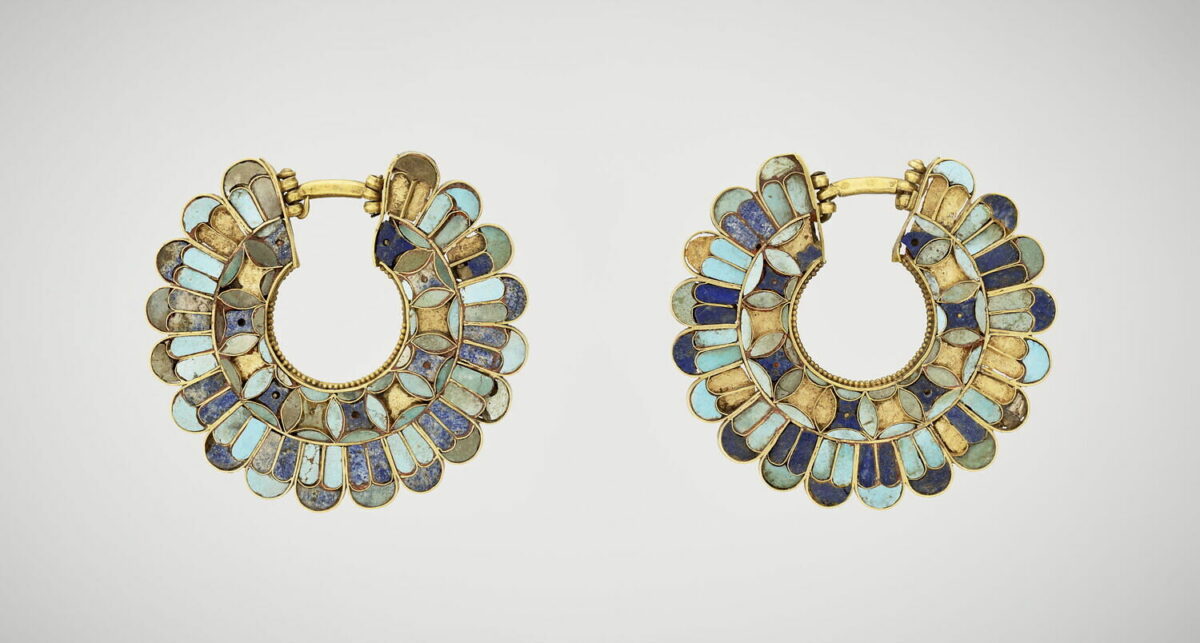


This gold necklace (L. 26 cm) from Achaemenid era Iran, is inlaid with onyx in the form of an “eye stone”. Dated 559-330 BCE, was found in the region of Behbahan located in south-east Khuzestan (Razmjou, 2019). Six bulky pomegranates are represented in the lower part of the necklace.


Earrings, Iran, Pasargadae, 5th-4th C BCE. National Museum of Iran
“from a treasure discovered in the 1950s at Pasargadae. This hoard of elite female jewellery of 5th to 4th century date appears to have been hurriedly hidden in a water jar in the royal garden at Pasargadae, most probably at the time of Alexander’s advance on Fars, late in 331 BC. Included in the hoard was a pair of earrings with pendant beads of lapis enclosed in a delicate wire mesh”[Sabrina Maras]

Eleanor Barbanes Wilkinson


2. second photo https://pin.it/4SCIYUU
From Susa, Iran, 550-330 BCE (Persian / Achaemenid)
gold and faience, 7.5 × 5.2 × 1.1 cm
to compare
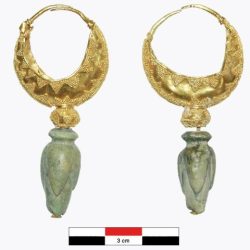
Earrings, Ugarit, Syria 2nd millennium BCE
Pair of a crescent-shape earring decorated of filigree and granulation; a stone is hang up on the top part (crescent-shape and biconical bead). 2nd millennium BCE
Ras Shamra [ancient Ugarit], Tomb IV, House C, Central quarter.
Preliminary observation on three Late Bronze Age gold items from Ras Shamra-Ugarit (Syria) [Observations préliminaires de trois objets en or de l’Âge du Bronze récent de Ras Shamra-Ougarit (Syrie)], Romain Prévalet 2009


Urmia Museum, Western Azerbaijan, Iran.
Photo by Fabienkhan https://commons.wikimedia.org
- Ellen Rehm, “Man trank aus goldenen Gefäßen, von denen keins den anderen gleich war”. Luxusobjekte, ihre Funktion und ihre Besitzer innerhalb und außerhalb des achämenidischen Großreichs https://www.academia.edu/resource/work/38103860
- The Small-Scale Arts of Achaemenid Persia; Sabrina Maras, University of California, Berkeley https://www.the-persians.co.uk
- Museum Review: Achaemendis Conquer London, 2006 https://www.jstor.org/stable/40027159
Eleanor Barbanes Wilkinson - V.T. van Vilsteren and J. Nokandeh (eds), Iran: Bakermat van de Beschaving [Iran – cradle of civilization]. Catalogue of exhibition at Drents Museum, Assen 2018 https://www.academia.edu

